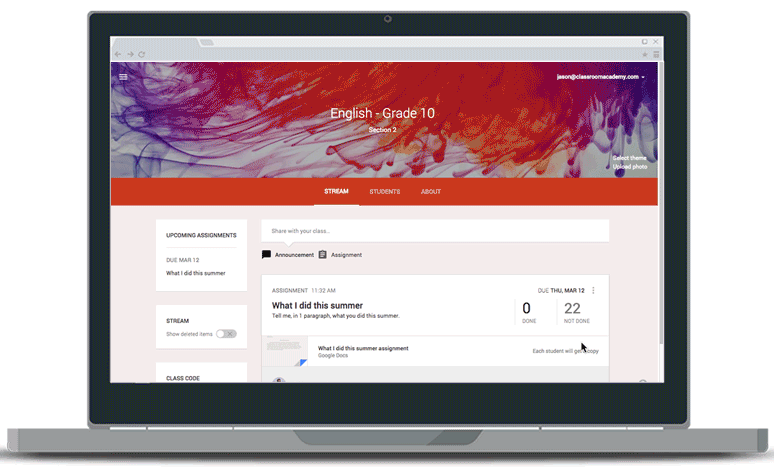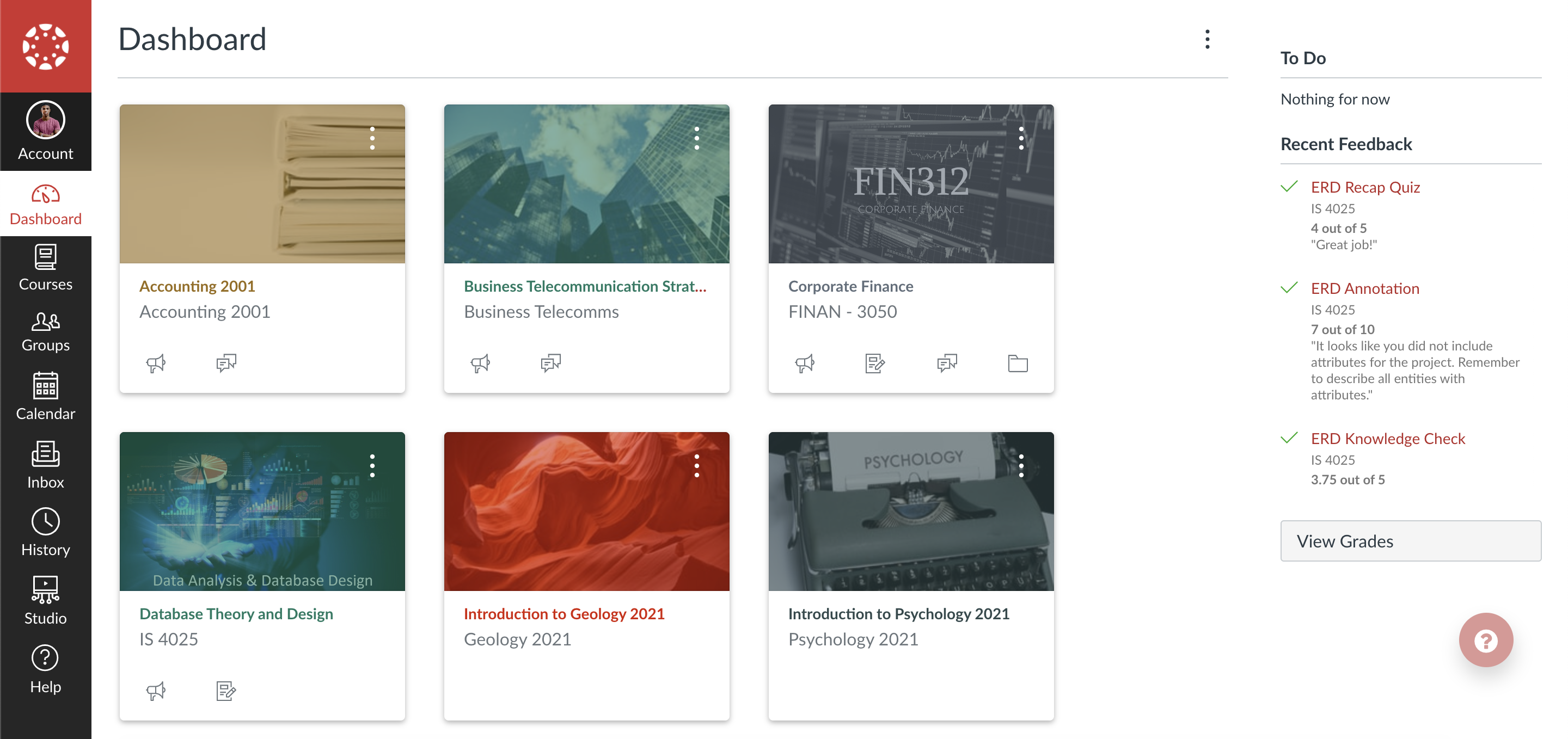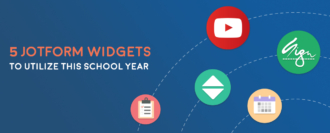The world of online education has exploded with new tools in recent years. Among the most popular platforms are Google Classroom and Canvas. But which is the right fit for your educational needs? To decide, take a look at what features these platforms offer, your pricing options, and a few other factors.
Google Classroom vs Canvas: The basics
Google Classroom overview
Google Classroom is a Google-developed education platform aimed to help educators personalize and manage the learning experience, as well as measure outcomes. Its tools simplify creating, distributing, and grading assignments, among other capabilities and since it’s part of Google’s ecosystem, it integrates seamlessly with Google Drive, Google Docs, and other Google services.
The Education Fundamentals plan is free for qualifying institutions, with three more paid tiers designed for those who don’t qualify or who need more features and customization. The Education Standard plan is $3 per student per year, and the Education Plus plan is $5 per student per year. Google Classroom also offers a Teaching and Learning Upgrade at $4.80 per license per month.
Canvas overview
Canvas, on the other hand, is a comprehensive learning management system (LMS) designed to connect educators and students with resources, tools, and content. Educational institutions of all levels, from K-12 to higher education, use it as do businesses for employee training.
Though Canvas offers a free version with limited features, it primarily operates on a subscription model, with pricing based on the institution’s size and needs.
With all of that in mind, let’s explore each platform’s features.
Google Classroom
Key features
Designed for the K-12 learning environment, Google Classroom’s educational technology works well with both in-person and hybrid classrooms, with key features including:
Streamlined assignment creation, management, and monitoring
You can easily create and distribute assignments in Google Classroom. Because many public educational resources are designed with Google Classroom in mind, it’s easy to add pre-made assignments directly to your Google Classroom, attach all types of files to assignments, and create due dates. Plus, you can reuse your assignments to get the most value from your time. Finally, monitor, grade, and return student work confidentially using a rubric to provide private feedback.
Efficient class organization
Google Classroom has different tabs for simple tracking and organization. Most notably, the Stream tab functions like a classroom bulletin board where you can make announcements about upcoming work or deadlines.
Similarly, the Classwork tab lets you group related content and organize assignments so your students can find what they need. The People tab facilitates communication within Google Classroom and lists all teachers and students in your class. The Grades tab gives you an overview of who has submitted work and how each student is performing.
Pros and Cons
The advantages and disadvantages of Google Classroom include:
Pros:
- Quick to set up and get started
- Integrates seamlessly into the Google ecosystem
- Free to use for schools that qualify
- Works on multiple devices
- Allows communication with parents without requiring them to log in
- Facilitates co-teaching
Cons:
- Doesn’t support complex course structure
- Only basic analytic tools
- Requires extra work to integrate non-Google tools
- Doesn’t offer features of a full learning management system, such as attendance tracking and discussion forums.
- Limited customization options
User ratings
The user reviews for Google Classroom are largely positive, with most people noting that the software is simple to use. Many reviewers added that Google Classroom pricing removes barriers to adoption for schools in low-income communities. The negative reviews focus on issues such as overwhelming email notifications and cumbersome file uploads.
Canvas
Key features
As a complete learning management system, Canvas is a full-feature platform for educational environments of all types, including colleges and corporate learning. Its key features include:
Modular course design
With Canvas, you have control over your course design. You can lay out specific paths or organize your lessons sequentially, all while using the HTML editor to embed multiple types of content into your lessons.
Comprehensive assessment features
Your students can submit assignments by entering text or uploading files, and you as the teacher can create customizable rubrics for standards-based grading. If your class is mastery-based, you can link learning objectives to specific assignments.
Advanced grading capabilities
You can create a customizable grading scheme that assigns weights, categories, and drop rules. To eliminate bias, you can grade student work anonymously. The grading interface supports rubrics, inline annotations, and audio/video comments.
Pros and Cons
The advantages and disadvantages to Canvas include:
Pros:
- Integrates easily with external tools such as plagiarism checkers without clunky workarounds
- Enforces prerequisites and conditional content release
- Multiple communication options, including announcements and multimedia content
- Advanced analytics and reporting to track engagement and performance trends
- Scalable for large classrooms
- Strict security protocols
Cons:
- Steep learning curve for new users
- Time-consuming to set up
- Full functionality is only available with paid versions
- Must be online to submit work and complete assignments
User ratings
Canvas is highly rated by users because of its comprehensive features and assessment tools. Satisfied users mention that it allows detailed progress tracking and transparent student engagement tools. The negative reviews mention occasional technical glitches and inconsistent notifications.
Google Classroom vs Canvas: Features and integrations
Google Classroom and Canvas come with comparable features you’d expect from a learning management system. However, they each have unique selling points:
- Messaging capabilities: Both platforms let teachers and students communicate through the platform. Google Classroom offers a streamlined communication tool where teachers can post announcements and questions to a class stream. In contrast, Canvas provides a more robust messaging system with an inbox, conversation threads, and video messaging capabilities.
- Notifications and alerts: Google Classroom provides email notifications for new assignments and grades. Canvas, however, boasts a more customizable notification system where students choose how and when they receive notifications, whether through email, text, or even social media.
- Ease of use: Google Classroom often gets praise for its simplicity and intuitive design, making it especially suitable for younger students or those new to online learning. Canvas, while feature-rich, may have a steeper learning curve, but it offers more in-depth functionality once users have mastered it.
- Integration with other tools: Google Classroom shines in its native integration with the rest of the Google suite of tools. Canvas, on the other hand, offers broad third-party app integrations.
- Support and security: Both platforms prioritize user support and security. Google Classroom benefits from Google’s extensive support network and top-tier security protocols. Canvas offers 24-7 support and maintains a transparent security policy with regular audits and updates.
Google Classroom vs Canvas: Key similarities and differences
Similarities
- Both provide a platform for assignment distribution, grading, and feedback
- Both offer cloud storage integrations
- Both emphasize collaborative learning with tools for discussion and group work
Differences
- Google Classroom is more streamlined and simple, while Canvas offers more in-depth features
- Canvas has a broader range of third-party app integrations
- Google Classroom is tightly integrated with Google services
Google Classroom vs Canvas: The right choice for you
When determining the best fit, consider these key factors:
Budget: If cost is a concern, Google Classroom’s free offering is compelling for institutions that qualify.
Integration needs: If you’re heavily invested in Google’s ecosystem, Google Classroom might be the natural choice. However, if you require third-party integrations, Canvas could be more suitable.
A feature-rich solution vs a simple solution: For a more straightforward, intuitive platform, Google Classroom is ideal. For more in-depth features and customization, Canvas stands out.
Final decision: Google Classroom vs. Canvas
Both tools are effective ways to manage your classroom, and your choice will depend on your specific needs, budget, and preference for simplicity or depth of features.
Google Classroom may be a better option if you’re anxious to get started and you want to set up your classroom and upload assignments quickly. It can also be the best option if you have limited funding and need a solution that’s readily available.
Canvas may be the right choice if you need the additional functions and features of a comprehensive learning management system. You may also prefer it if you’re using it for corporate training and need tighter control over when your students can access assignments.
Whichever you choose, both platforms are equipped to provide a rich online learning experience. But what if you need something a little more flexible?
A Google Classroom vs Canvas alternative: Jotform
For educators searching for a versatile tool that can serve as a Canvas or Google Classroom alternative, Jotform could be your best bet. It offers a dynamic suite of tools so you can create and manage online forms, quizzes, spreadsheets, and even no-code apps to support your classroom. With features like drag-and-drop customization options, conditional logic for forms and quizzes, and thousands of templates, the possibilities are endless.
Another great feature for educators is Jotform’s YouTube widget, which lets instructors embed YouTube videos directly into forms and quizzes. And Jotform also extends generous discounts to educators, like a 50 percent discount on Jotform’s offerings and a 30 percent discount on Jotform Enterprise. Give Jotform a test drive and try it for free today.
This article is especially useful for educators, school administrators, and training managers who are trying to choose the right digital learning platform for their students or employees.
Photo by Jeffrey Hamilton on Unsplash








































































































Send Comment: